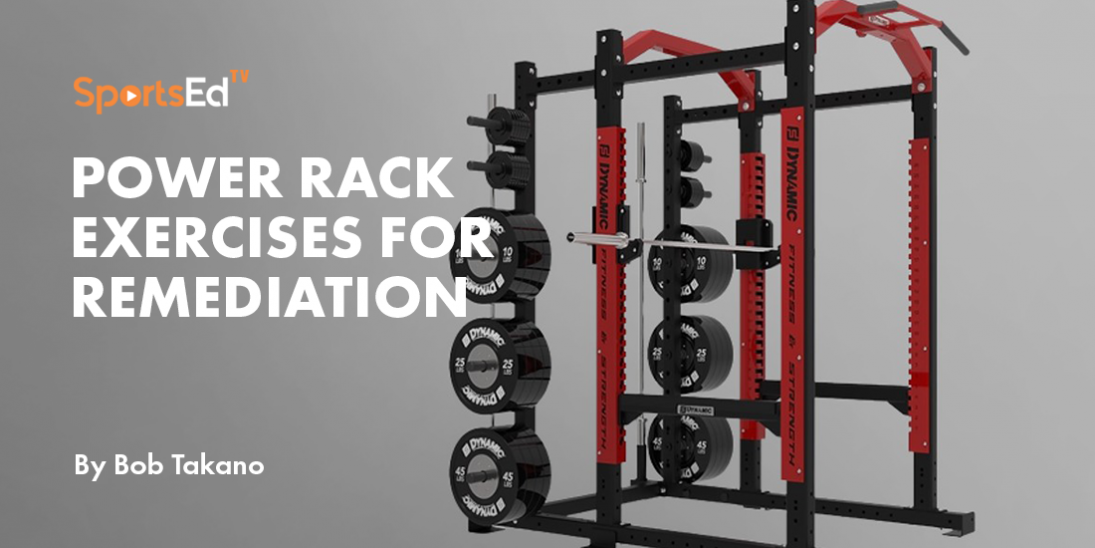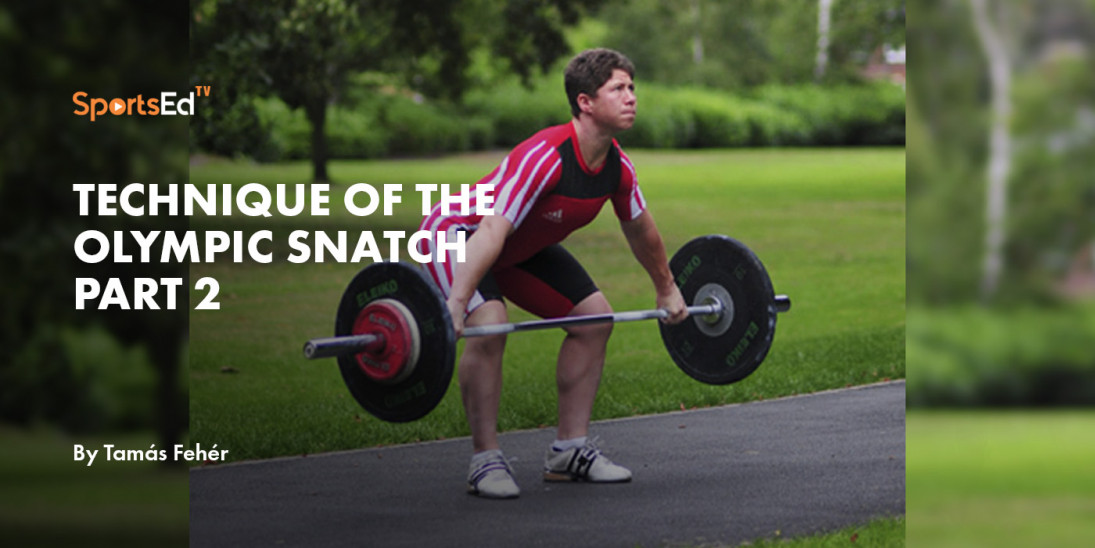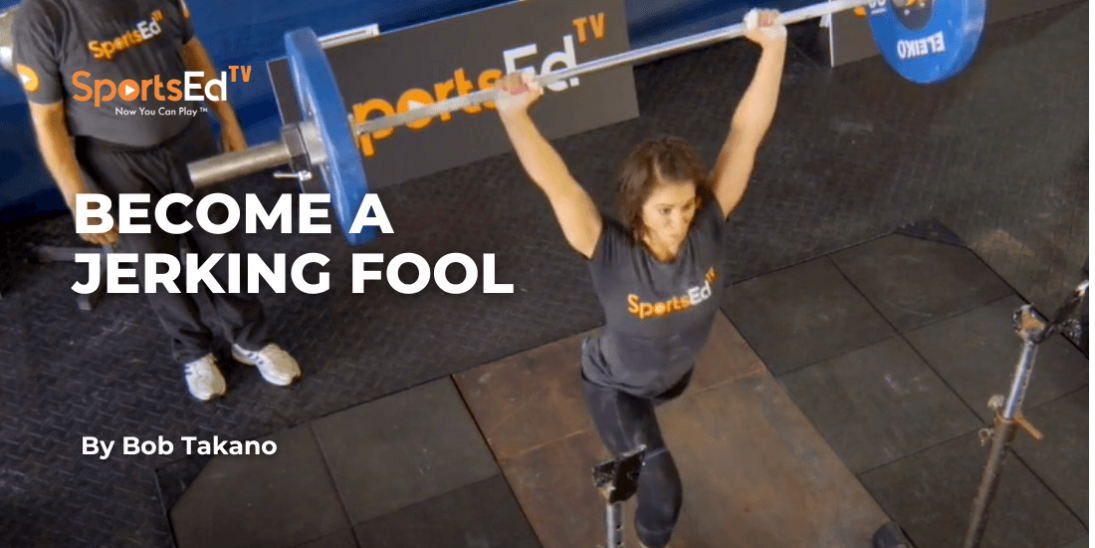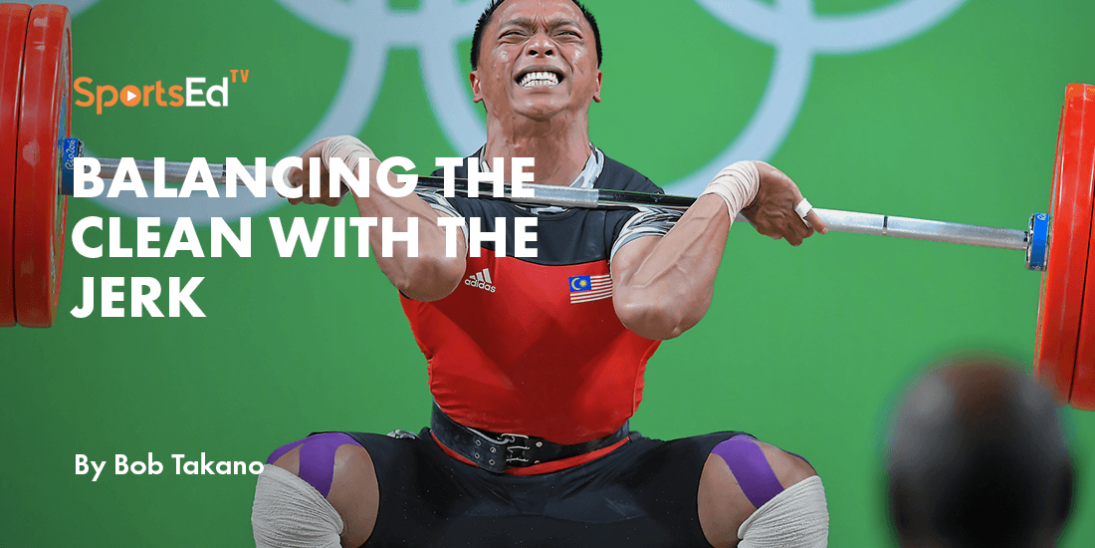Weightlifting
Welcome and thanks for visiting...

Barbell Trajectory in Weightlifting

SportsEdTV Weightlifting is committed to bringing athletes, coaches, and parents pro-level Weightlifting education videos for FREE. All levels, anywhere, anytime. Check out our full instructional library and sign up to join our community
SportsEdTV Senior Contributors Mike Stone and Kyle Pierce share some recent research on the frequent topic of barbell trajectory. The referenced paper was the doctoral dissertation of lead author, Aaron Cunanan. The lengthy scientific paper may be accessed in its entirety via the link at the bottom of the following introductory paragraphs by Drs. Stone, Pierce, and Cunanan.
Recent Research on Barbell Trajectory
by Michael H. Stone, PhD; Kyle C. Pierce, EdD; Aaron J. Cunanan, PhD
Background
An on-going controversy among athletes and coaches involved in the sport of weightlifting has been concerned with “what is the best lifting technique?”, along with “what is more important, technique or some other factor?”.
Our group of sport scientists and coaches have been interested and involved in attempting to answer these questions for over 20 years. We have studied these questions among both men and women at the international, USA National and USA regional levels. Most recently, we studied the technique (basic bar path) of high-level male and female athletes competing at the 2015 World Championships and the 2017 Pan-American Championships. The resulting publication is entitled:
Cunanan A. et al. Survey of Barbell Trajectory and Kinematics of the Snatch Lift from the 2015 World and 2017 Pan-American Weightlifting Championships. Sports (Basel) 8(9):118, 2020. (on-line).
A link to this paper is featured at the end of this blog.
Consistent Findings
Basically, our studies and observations have led us to these conclusions:
- Once basic technique is established (usually within the first few months of training) it is very difficult to alter. Indeed, one may be stuck with it. Therefore, coaches should really take care in instilling reasonable technique initially.
- There are few technique differences between regional and higher-level weightlifters. These differences are largely related to timing and the level of force athletes were able to exert at key positions; a finding that has been known for at least 40 years. See for example:
Kauhanen H. et al. A biomechanical analysis of the snatch and clean & jerk techniques of Finnish elite and district level weightlifters. Scandinavian Journal of Sport Science 6(2): 47-56, 1984
- While there are some common factors, such as the achievement of a transition and a power position (often termed the scoop or double knee bend position), there are a number of different techniques (i.e., trajectory patterns) that are employed in getting there.
- Because of points 1 and 2 above, the weightlifter’s strength becomes a primary factor in lifting greater weights. Indeed, evidence indicates that strength alone can account for as much as 42.5% of the variance in the change of weightlifting performance. See for example:
Joffe, S.A.; Tallant, J. Neuromuscular predictors of competition performance in advanced international female weightlifters: A cross-sectional longitudinal analysis. Journal of Sports Science. 2020, 38, 985–993.
- In the most recent study (Cunanan et al. 2020) we noted the following:
Several different barbell trajectories were observed. These different trajectories were not strongly related to differences based on sex, weight category, and ranking. These results indicated that weightlifting success can be achieved with a variety of trajectory profiles, particularly before the transition.
Importantly, barbell trajectory or any other examined kinematic (e.g., vertical and horizontal displacement, velocity, etc.) variables alone are not likely to reliably relate to weightlifting ability at this level. Therefore, coaches should evaluate weightlifting technique within a more general framework. This general framework includes being able to achieve a reasonable transition and power position, just before the 2nd pull is initiated.
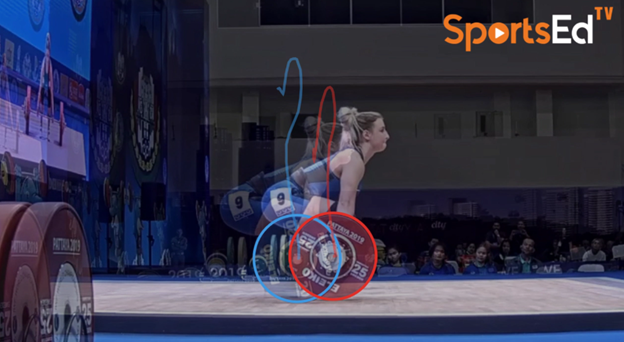
Katherine Nye’s clean vs. snatch trajectory analysis (World Championships 2019)
Conclusions
As consistent statistical or effect size differences among the top-three women or top-three men were not noted, this suggests that other factors, such as strength, helps to explain differences in weightlifting performance and ability. Furthermore, the short time period of technique stabilization among beginners and subsequent difficulty in altering technique indicate the practical importance of strength in the long-term improvement of weightlifting ability.

